Spiders Use Hydraulics to Move Their Legs
St. Andrews Cross Spider. Photo Credit: Ken Slade
From their unusal and multitudinous
eyes to their eight robot-like legs, spiders have a history of receiving a bad
rap. While these traits may seem like anatomical abnormalities, there’s a
simple physiological explanation for spiders’ odd movements: their legs rely on
a combination of hydraulics and skeletal muscles to move.
Spiders are arthropods, which means
“joint-footed” creatures. In all arthropods, traditional bones and an internal skeleton
have been replaced by a strong, inflexible (but light) exoskeleton (outer
shell) made of chitin (the same material as shrimp shells). Since spiders don’t
have internal bones, they lack the same movements as vertebrates, like us.
Instead, arachnid locomotion is defined by a series of flexions and extenions.
To flex their spindly legs inward, spiders use muscles. To extend their legs,
however, spiders manipulate the fluid (hemolymph) inside their extermities.
Spider Close-up. Photo Credit: The Journal of Controlled
Mechanical Power in Southern Africa
Inside, the spider houses an
extensive fluid network. Similar to our blood, arachnids contain hemolymph, a
circulatory fluid responsible for moving oxygen, nutrients, and waste
throughout the body. Too little fluid, and circulation will be ineffective (low
blood pressure). Too much, and the body’s fluid processing systems will be
overwhelmed (high blood pressure). For humans, blood pressure extremes can be
dangerous, but spiders use these pressure differences to their advantage. When hemolymph
enters the legs, and pressure increases, the legs extend. As hemolymph leaves
the legs, pressure decreases, and legs retract.
Spider Leg Diagram. Photo Credit: Eky.edu
Within each leg, there are seven tubular sections and three functional regions. The hip joint attaches to the circular body of the spider, allowing multidirectional movement (left, right, up, down). With both extension muscles (to push out) and flex muscles (to pull in the legs), it is the most complex soft tissue arrangement. Below it, the femur-patella and (underneath) tibia-metatarsus facilitate vertical movement. These sections only have flexor muscles; to extend the legs, hemolymph is pumped from the spider’s body to the lower ends of the femur-patella and tibia-metatarsus joints. When full, fluid pressure forces leg extension. As a liquid, the hemolymph fills in the gaps between muscle fibers for efficient extension, while simultaneously stiffening the leg. Not only is this energy efficient, but with only flexor muscles attached to the body, the spider can also maximize muscle volume and stiffness for an ultimately stronger grip on prey.
To jump, spiders fill their legs with
hemolymph, extending them as pressure increases. Simultaneously, they flex their muscles,
preparing to jump. Upon relaxation, the pressurized legs extend to initiate the
jump. Spiders can further influence their in-flight trajectory by manipulating
the timing, force, and extension of each leg. Compact atomical positions lead
to shorter flights and faster speeds, while spread out limbs behave oppositely.
During any jump, a silk line allows the spider to stop descent at any point.
Small spiders (under 3 grams) use liquid
(hemolymph) excanges to catapult themselves from one area to the next,
facilitating jumping movements and predation. Larger spiders however, require
additional muscle forces to move and still their masses, otherwise, they succumb
to uncontrollable bouncing with high hydraulic pressure. By combining the
hydraulic catapualt strategy of smaller spiders with muscle-based contractions,
larger spiders manuever with ease.
Legs aren’t the only hydraulic-powered
extremities. In some spiders (Entelegynae), muscular genitalia movements have
been replaced with expanding fluid membranes,
allowing for increased rotation and higher movement complexity. Why complex genital
movements are advantageous is difficult to say. Perhaps hydraulics provide a mechanical
advantage for copulation or maybe complex movements improve the lock and sperm
transfer. Although the rationale is unclear, the sheer dependence on the
hydralics system (for both movement and reproduction) poses a key
vulnerability: If a spider’s cephalothorax (center) is damaged, movement will
be severely limited, as the hemolyph pressure drops precipitously down to zero.
So the next time you see a spider,
stop to consider the wonderous, hydraulic physiology hidden beneath its unusual,
jointed exoskeleton. Afterall, it’s hard to squish what you understand.
What’s you favorite part
of the spider’s hydraulics system? Leave your comments in the comments section
below.
© 2020 Sabrina L. Groves. Creative Commons
Attribution-Noncommercial 4.0 International License.
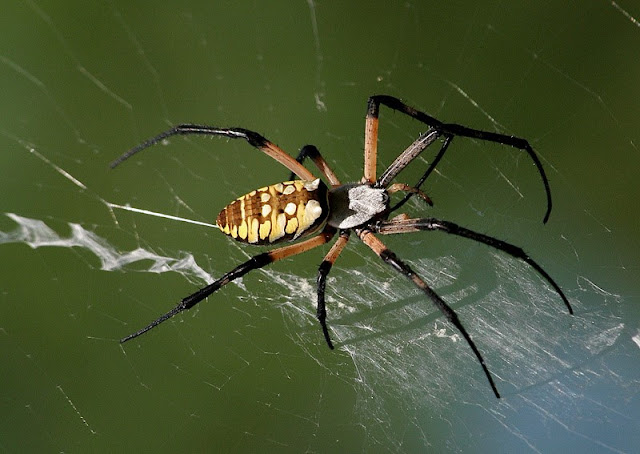
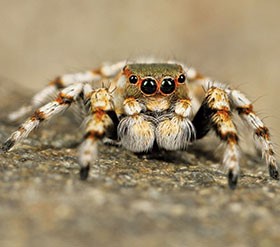

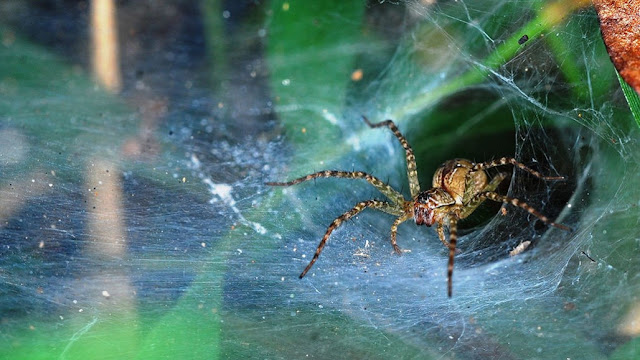
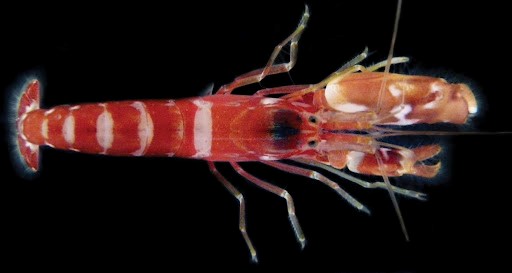
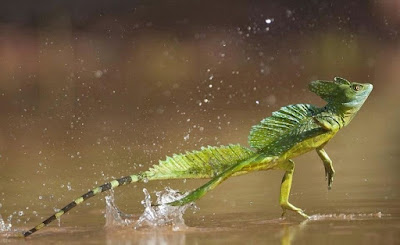

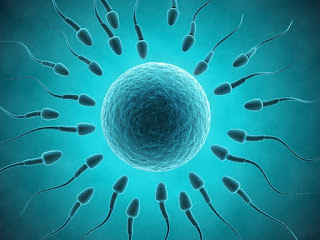
Comments
Post a Comment